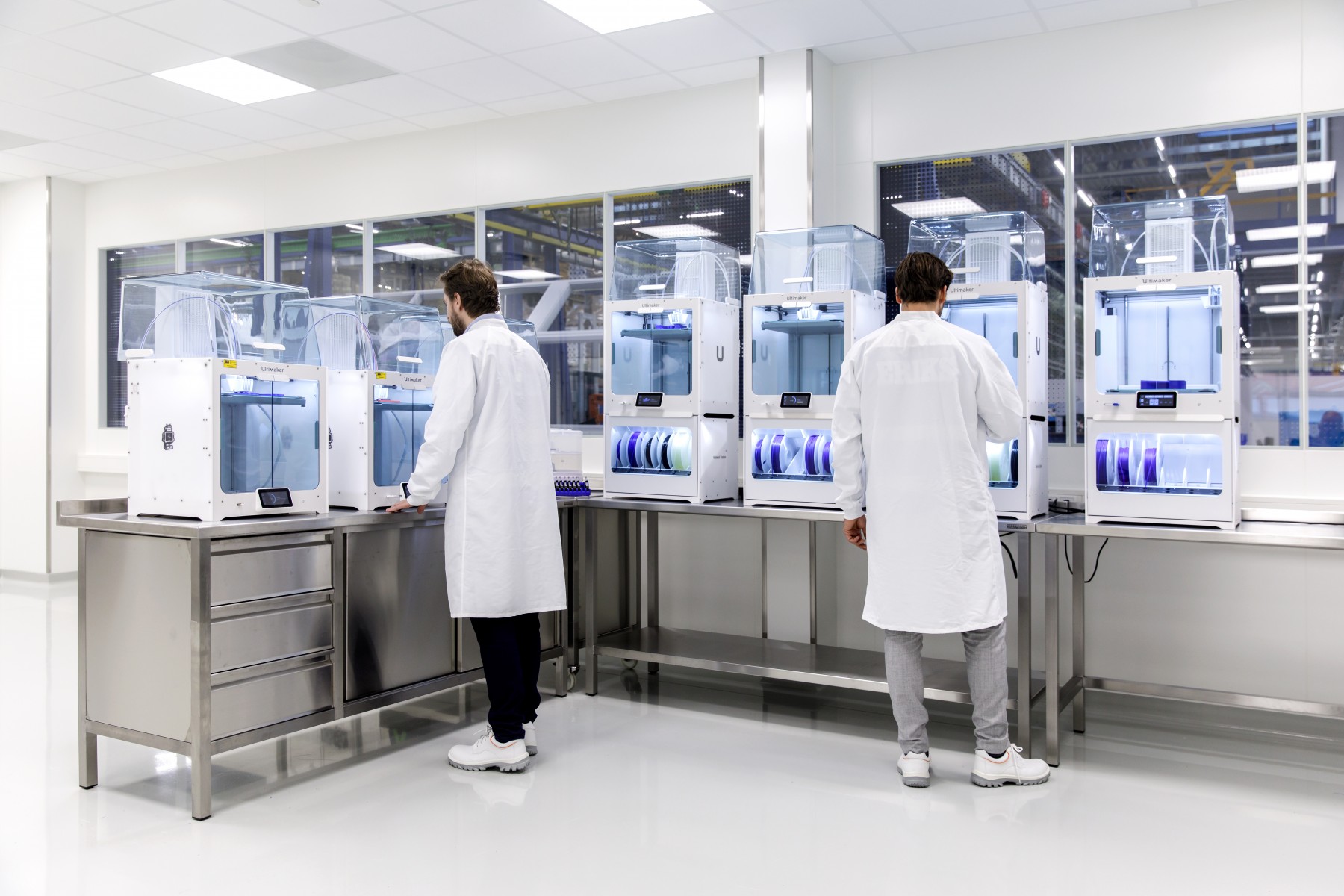
The use of 3D printing within the healthcare industry will be “unavoidable” once the coronavirus crisis is contained, says an industry boss.
Jos Burger, CEO of Dutch 3D printer manufacturer Ultimaker, believes the pandemic will give hospitals confidence in the technology as a viable production method — even after the immediate crisis has subsided and demands are no longer as high.
Burger said the cost savings and convenience of using 3D printing to make parts for medical devices makes it a “no-brainer” for hospitals to embrace it in the future.
He added: “I think it’s unavoidable — it’s here to stay. Those printers are in the hospitals and people are using them, so there will be quite a force going forward — not just to keep using them, but to integrate them into the more classical structures too.
“Even before the coronavirus crisis, over the past year or so we saw quite a big move into distributed manufacturing [a manufacturing method that is decentralised and often involves co-ordinating many smaller, local sites using IT networks].
“If you look at the automotive or aerospace sectors, 3D printers are ideally suited for producing tools that can be used to make, or repair items — and that is also true for the healthcare industry.
“So I believe we will see an evolution where the big suppliers will also tap into 3D printing. I can absolutely see that happening.”
Benefits of 3D-printed medical devices
Components for items such as ventilators and respirators — used to ease breathing problems caused by the serious cases of coronavirus — can be printed for “just a few dollars” per part, according to Burger.
In contrast, a hospital may have to pay a supplier up to $10,000 in production costs per part in the US.
Burger added that people are often “completely shocked” when they learn the financial savings 3D printing can bring compared to more traditional manufacturing methods.
These cost savings — and the ease with which printing a component can be achieved — mean any defective or broken part that is not fit for its intended purpose can be altered, if necessary, and printed again.
The process of printing medical device components is also being made easier because it can be done locally to the hospital requesting the item.

This means hospitals can order a part, and have it printed and shipped to them quickly. Temporary supply shortages can be solved using 3D printers as well.
Medical device components can also be made to specifically suit the needs of individual patients using 3D printing.
Burger said: “Today, we are quite often talking about standardised sizes, but with 3D printing, you can also make it completely patient-specific — in size, shape, thickness etc.
“From that perspective, I think it can play a new role. 3D printing is catching up — we are not there yet but we will get there.
“Because of the jump we are seeing in the quality, and the consistency, of printed objects, we are getting closer and closer to more traditional methods.
“Eventually, 3D printing will clearly take over — but it takes time, especially in the healthcare industry.”
How Ultimaker is promoting 3D printing into healthcare industry
Ultimaker recently announced it would make its global network of printing hubs, experts and designers available to hospitals that are in short supply of vital tools to cope with the coronavirus pandemic.
Through its website, healthcare providers can locate the nearest available printing site via a continuously updated map.
They can then send approved 3D print designs and material specifications directly to the printer. Ultimaker’s engineers will produce the required part and send it back to the hospital.
After it has been tested and approved by the hospital, the part can be made available for further 3D-printed production on a larger scale.

This initiative was launched on 20 March, and Burger said the intention is to make the production process “as smooth as possible” for people to exchange knowledge on a global level.
He added: “When we opened up the system it became completely overflooded with people looking to connect and share information, which is amazing.”
Although Ultimaker has made its printing network and expertise available across the world, the majority of its printers are deployed in Europe and the US — with hospitals in both regions experiencing severe shortages of ventilators, and other critical devices.






